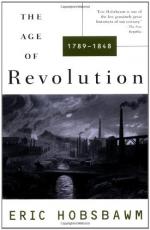|
This section contains 248 words (approx. 1 page at 400 words per page) |

|
The Laboring Poor Summary and Analysis
Hobsbawm defines three possible paths for a member of the working poor during this period. They can continue to suffer, try to elevate themselves to the middle classes, or rebel.
Conditions for the working poor deteriorate during this period. Working class neighborhoods become segregated from those of the middle class. Conditions in these slums are unclean and unhealthy. Disease runs high, and not until it spills over into the middle class is anything done about hygienic conditions.
Rebellion comes easily to the working poor under such conditions, Hobsbawm suggests. Unlike the rebellion of the French Revolution, however, which was led by the educated Jacobins and supported by the urban poor of Paris, this new "working class" rebels against the middle class business owners and merchants as well as the rich upper class.
Rebellion comes in the form...
(read more from the The Laboring Poor Summary)
|
This section contains 248 words (approx. 1 page at 400 words per page) |

|




